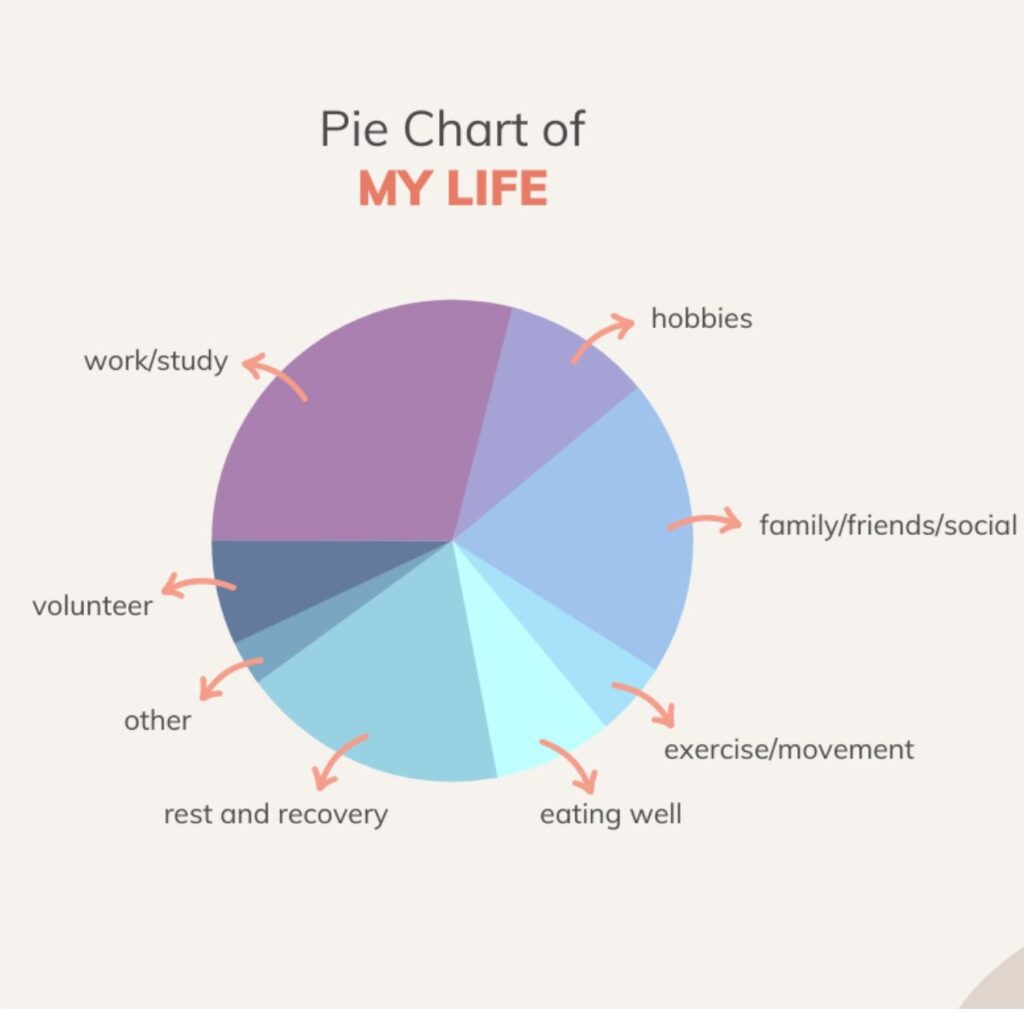Written by Danielle Miro, PhD, Robyn Pashby, Ph.D.
February 22, 2023
You may hear the word burnout and associate it with feeling tired, run down, and stressed out at work. You may also feel “over it” or detached from what you’re doing, experience irritation or be easily annoyed, have lower motivation or procrastinate to delay tasks, and/or have sleep disturbance, inattention or distractibility. Changes to your health may also occur, including high blood pressure, headaches, muscle tension and fatigue.
Behaviorally, burnout is commonly associated with both subtle and significant changes in what you do. Some examples may include getting less exercise, preparing fewer healthy meals at home, spending less time with people in your support system, craving more sweet, sugary foods, using more alcohol or other recreational drugs and engaging in other avoidance tactics such as shopping, online gaming, or endless doom scrolling. In the midst of a pandemic and so many other domestic and international stressors, we know that burnout is not just because we are overworked and overstressed. It is not just a workplace issue.
Burnout occurs across the continuum of our lives, touching every goal, every relationship and every aspect of our lives. As clinical health psychologists, we sit with clients every day who are struggling with various versions of burnout. And what we have come to realize is that burnout isn’t a noun. It isn’t something you have or don’t have, like a notebook or an apple. Instead, we have grown to view burnout as a verb. It is an action or a state of being that intersects every part of our daily lives. And therefore, we must treat it accordingly.


The anecdote to burnout that most of us hear about is “self-care” and often we hear phrases like “Put your oxygen mask on before you put on someone else’s.” While there is a kernel of truth in that well-meaning quip, and we are strong believers in self-care, telling someone in the throes of burnout to engage in self- care can feel like throwing a life-ring to someone caught in a tsunami. It just isn’t going to cut it. Moreover, if it feels like it SHOULD be possible, suddenly feelings of inadequacy or shame at not being able to engage in self-care arise. Let’s be clear. You do not need to DO more to feel better. But what will help?
First, we challenge you to ask yourself what is this burnout telling you? Is racing around in this way keeping you from asking yourself (or answering) some really tough questions about your life? Paying attention to our deepest needs and our personal values in the midst of our overwhelmingly busy lives is challenging, and something that we must continually work towards. One thing to ask yourself might be, if I thought of my life as a pie, what would the “slices” of pie in my life represent as my life is now?

There are many questions you can ask yourself in this process such as:
Are some slices of the pie larger than others?
Can I control the size of some of the slices?
What is missing in my pie?
What am I giving extra space to? How satisfied am I with my current allocation of pie slices?
We get it. For most of us, there are parts of our pie that we can’t control and some slices that are temporary. This metaphor, however, helps us clarify how we spend our time and find ways to feel satisfaction in our daily lives.
Telling someone in the throes of burnout to engage in self-care can feel like throwing a life-ring to someone caught in a tsunami. It just isn’t going to cut it.
When feeling burned out, it is common to have cynical or pessimistic outlooks towards multiple aspects of life. Perhaps it seems that your pie has too many competing responsibilities or parts that are not satisfying, which may also increase feelings of burnout. Or perhaps the real issue is that it feels overwhelming to imagine making some of the changes you know you need to make to break the cycle. If this sounds like your struggle, we encourage you to talk to a mental health professional, a spiritual leader, or a trusted friend or family member to help you navigate making some of these big changes.
What are some ways to cope with burnout or to manage symptoms of burnout? Below are some quick and easy ideas that may help in managing some feelings of burnout that don’t involve a yoga class (although those can be great, too!).
1. Notice the dog’s wagging tail. In other words, be present in your joyful moments. Take a moment to pause in the midst of your busy day and breathe when you find hints of joy; identify a few things in this moment or the last few hours that have given you joy or for which you have gratitude. Increasing our present focus helps us keep at bay focusing on the past or the future. Was the sky super blue this morning? Did your dog wag his tail extra hard when you walked in the door? Notice these moments. They matter.
2. Challenge yourself to find the parts of what you’re doing that bring you purpose and satisfaction. Chances are you didn’t end up in this position by chance…a series of choices got you here because you started out following your best intentions, perhaps even following your heart, before things got out of hand.
Chances are you didn’t end up here by chance.
Tune into the momentary experiences when you are acting according to your values and it may help you feel a bit less stressed about the situation. For example, although being a care partner may be time intensive and stressful, identify aspects of care partnership that bring you satisfaction, such as supporting the person you are committed to loving. Or try to recognize your strength to do things you haven’t done before. Remember why you started and reframe some of your catastrophizing thoughts to help you remember that some of your actions are likely in line with your values. Now, you just have to work at setting some better guidelines or boundaries around them.
3. Focus on good enough, not great. For most, burnout is accompanied by a desire to do things well (or perfect). This perfectionism can show up across all domains of life, from work to parenting to even taking care of our health. If burnout is present with managing health behaviors, then remember to focus on goals that are attainable and yet still match your values. Turning off all-or-nothing thinking may make it easier to continue to make choices that match your values. You do not need to go for the walk or eat the salad to lose weight. Focusing on a goal like weight loss is an example of telling yourself you have to ‘do more’ to feel better. It just adds to the feeling of overwhelm. Instead, ask yourself if getting outdoors in the sunshine lifts your spirits, and if the answer is yes, then go for it!
4. All things have their season. Even the hardest things in life come and go. Grief. Parenting. Medical diagnoses. Nothing lasts forever. At the peak of burnout it can be hard to keep perspective that you will not ALWAYS be in this same situation. Something will eventually change. Yes, sometimes change comes with hardship. But something will change. And change always provides an opportunity for renewal. For now, if you are stuck in a situation that you cannot control, try to focus on the aspects that you can control, such as your own breath in a moment of stress, the ability to take a day (or week, or month) off from work when you need it, or to finally make that doctors appointment you’ve been putting off so you can stop worrying about that suspicious mole on your back. One of the fun (or not-so-fun) parts of being human, is that change is always occurring around us and movement is always happening.
Something will eventually change. Yes, sometimes change comes with hardship. But something will change. And change always provides an opportunity for renewal.
5. Only take one arrow. As people who are so used to being “on” all the time, it is critical that we remember to give ourselves a break. That means to stop layering on self-judgment and criticism for struggling when things get hard. The Buddhist parable of the second arrow reminds us of how to deal with suffering more skillfully. Getting shot with an arrow hurts. And in life, we will all get hit with arrows and we will experience pain as a result. It is part of being human. But it is our own self-judgment and criticism – how we react to our pain that is the ‘second arrow’. The second arrow is the cause of much of our suffering. In other words, pain is inevitable, how much suffering we endure is ultimately within our control.
About the Authors:
Dr. Danielle Miro is a licensed, board-certified rehabilitation psychologist. Dr. Miro earned her doctorate at the University of Memphis in Counseling Psychology following completion of her master’s degree in Counseling at the University of Denver. She then completed her pre-doctoral clinical internship at the University of Kansas Medical Center, where she also completed her post-doctoral residency in neuro-rehabilitation psychology. She is centrally involved in leadership within the Society for Health Psychology and serves on the Board of American Board of Rehabilitation Psychology.
Dr. Robyn Pashby is a licensed clinical health psychologist. She earned her PhD in a dual-track Medical and Clinical Psychology program the F. Edward Hebert School of Medicine USUHS and completed her internship at the Washington DC Veteran’s Affairs Medical Center. She has advanced clinical training from the Benson Henry Institute and the Harvard Medical School in Mind Body Medicine.
She serves on the National Board of Directors of the Obesity Action Coalition and is a former Board member of the Washington DC Psychological Association.
Drs. Miro and Pashby practice at : Www.dchealthpsychology.com
Tags: Burnout, good enough, second arrow
